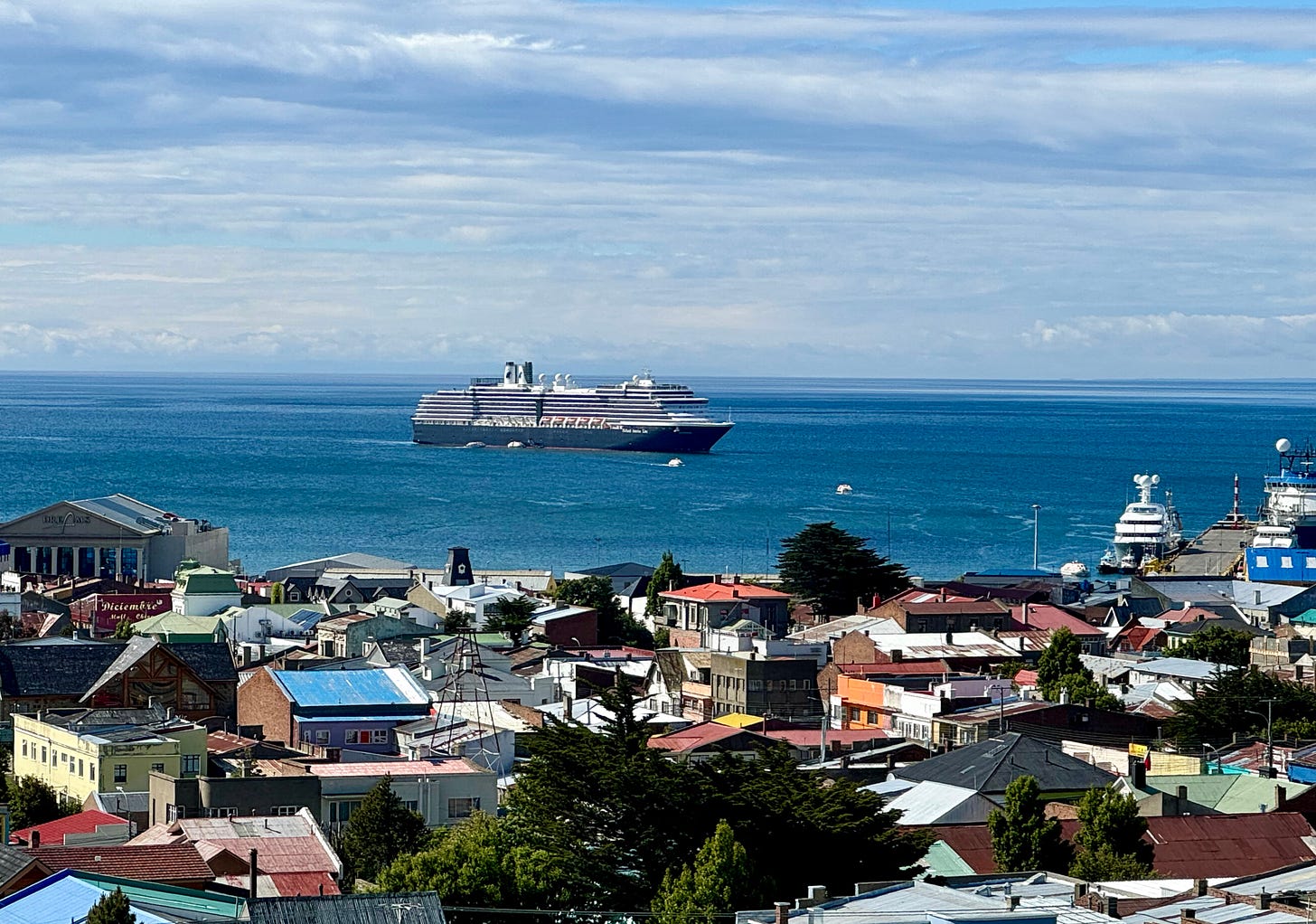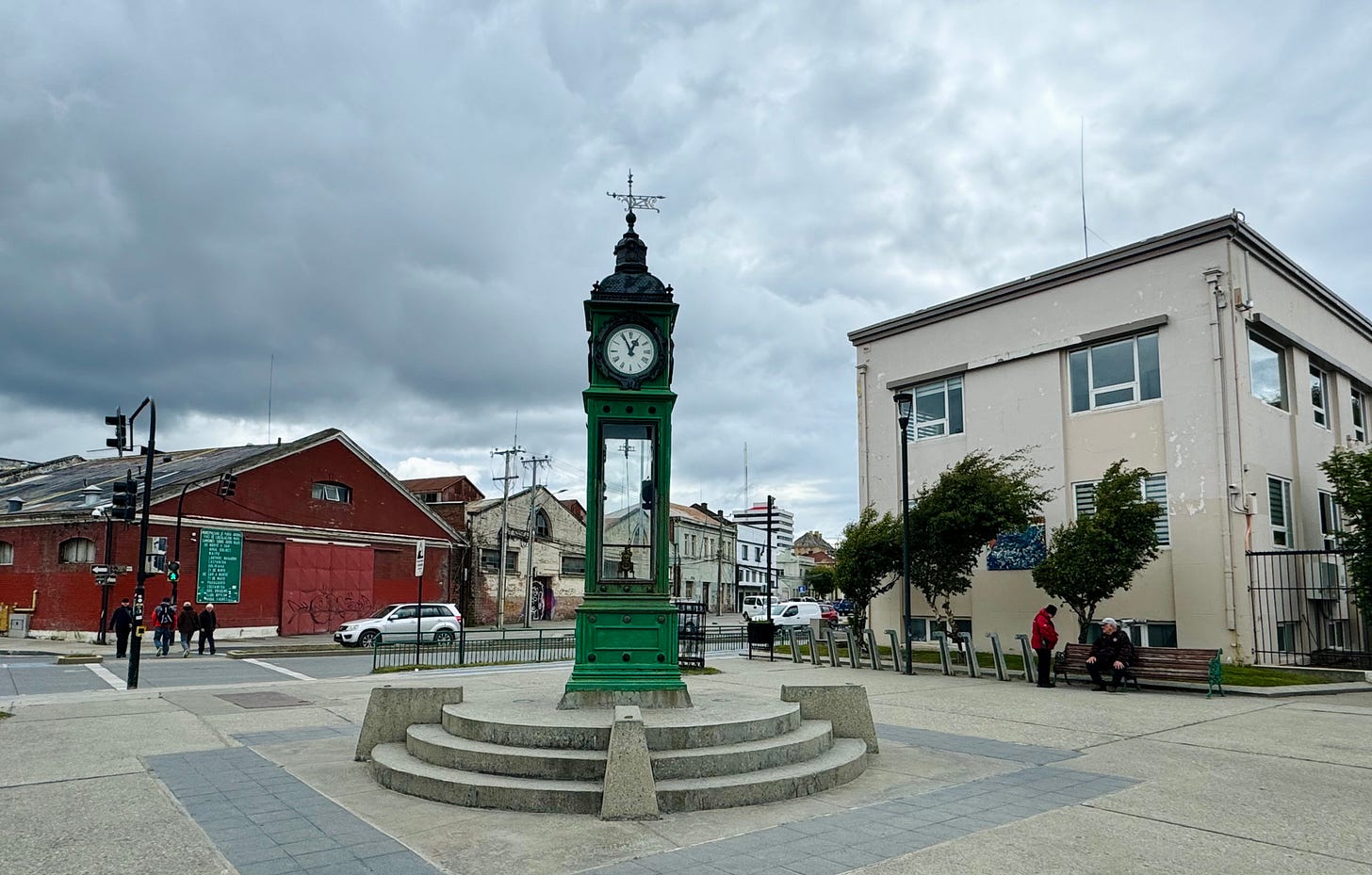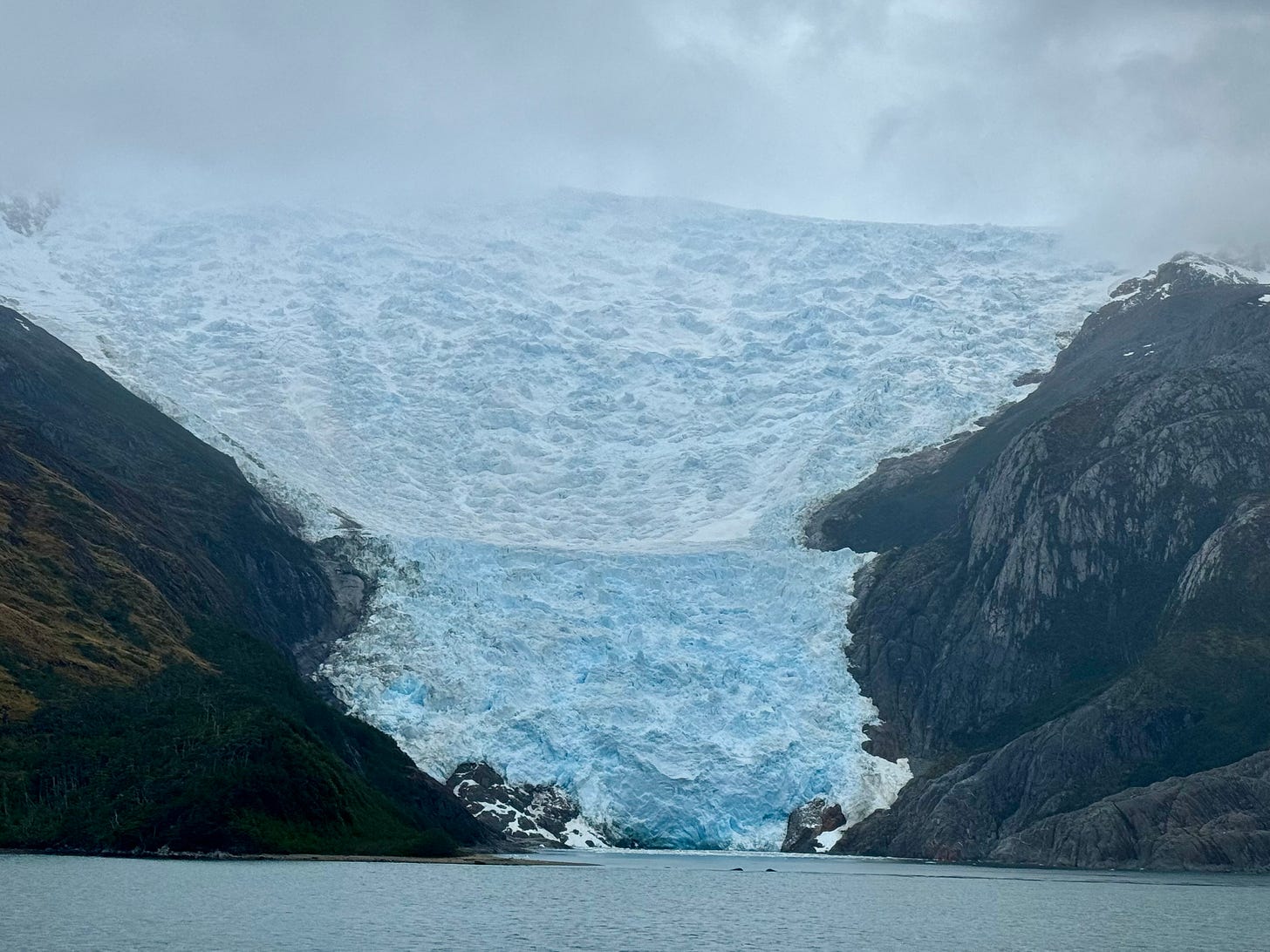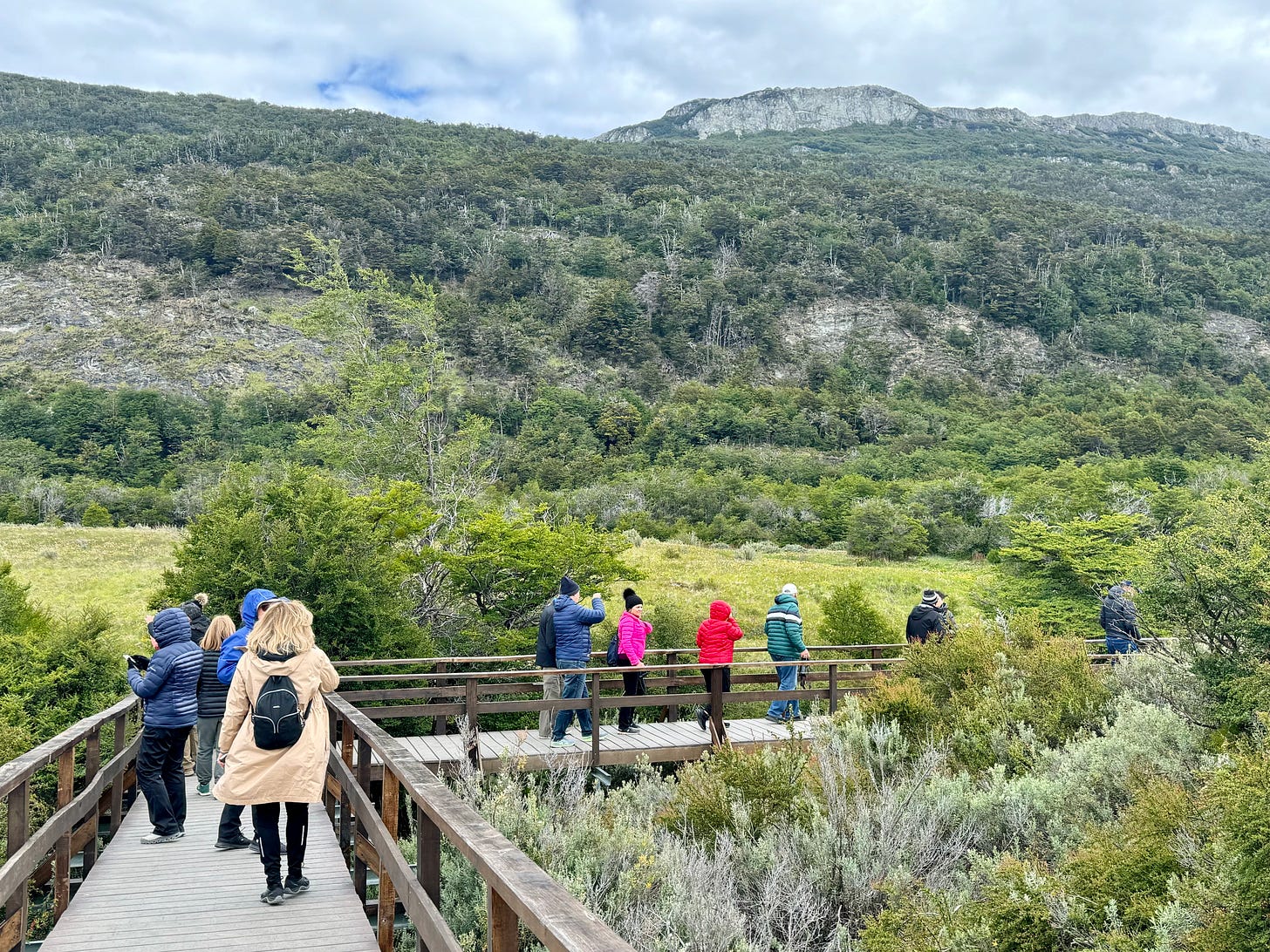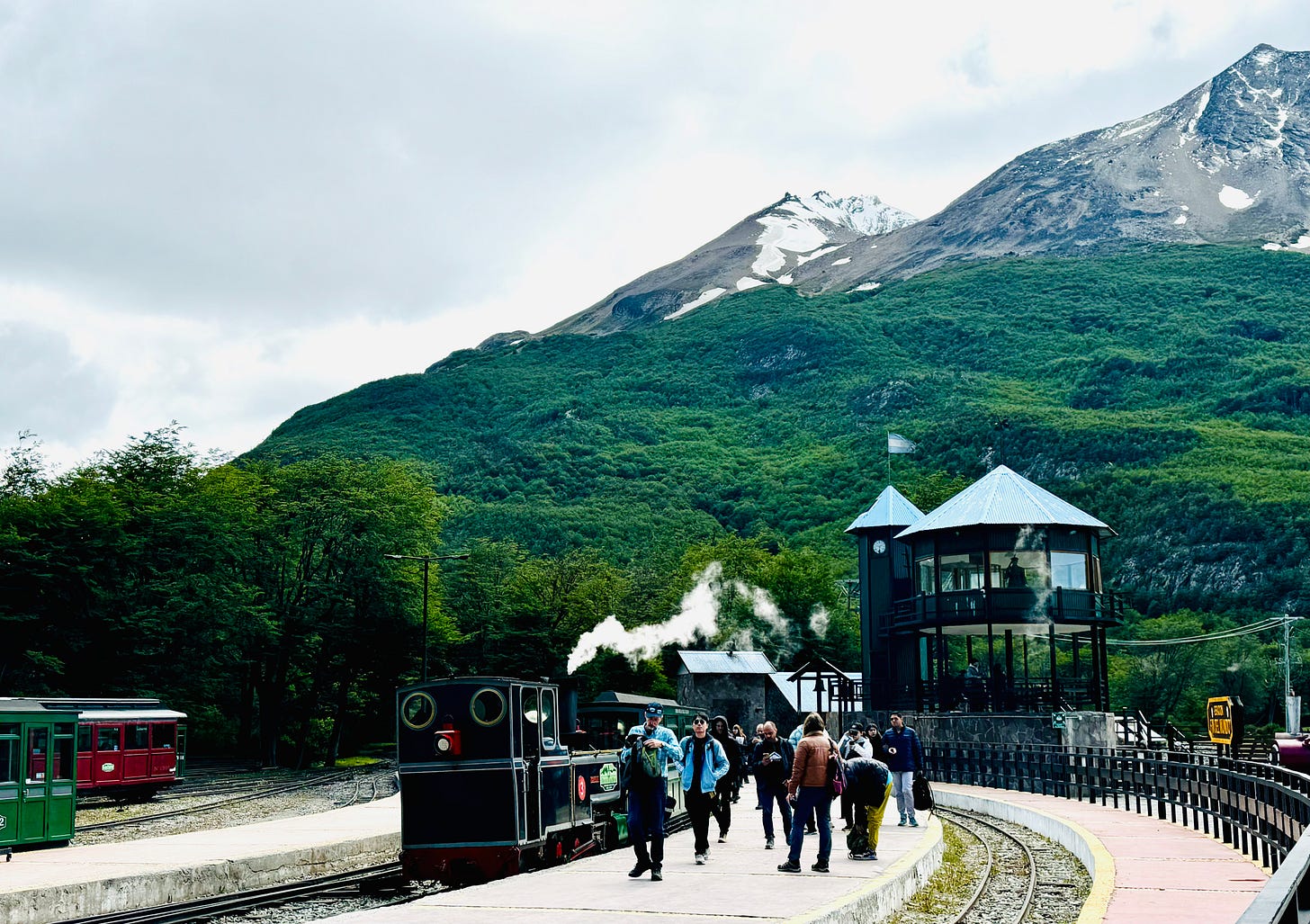The Last City in Chile, and the Southernmost City in Argentina
South America Cruise Diary (December 7-8, 2024)
Punta Arenas, Chile – December 7, 2024
When I woke up this morning, the Oosterdam had already arrived in Punta Arenas. I stepped out of the cabin to check the weather—it was cold, but not windy, with the temperature hovering around 3°C. This is another tender port, and I’ve come to enjoy riding in small boats over rolling waves as it adds a sense of adventure.
Punta Arenas, our final stop in Chile, is located near the tip of the country’s southernmost Patagonia region, along the Strait of Magellan—a natural passage connecting the Atlantic and Pacific Oceans. While it serves as a launch point for adventurers heading into the wilderness or even Antarctica, we are leisurely travelers, more interested in history, culture, and scenic walks. With a full day to explore, we set out to immerse ourselves in the city’s rich heritage.
Our first stop was the town center and the Plaza de Armas, where we admired the Hernando de Magellan monument and took in the surrounding colonial architecture. After a few snapshots, we continued uphill to the Mirador Cerro de la Cruz. Climbing the equivalent of three stories, we reached a lookout that offered panoramic views over the Strait of Magellan and Tierra del Fuego. The colorful houses nestled against the deep blue water created a picturesque scene that is so mesmerising.
Descending from the viewpoint, we passed charming homes, vibrant wall murals, and a quaint café before arriving at the Maggiorino Borgatello Museum. The exhibits offered insight into Patagonia’s flora and fauna, indigenous cultures, and early European settlers. I came away with a deeper understanding of this region’s layered history and the remarkable wildlife that call it home.
One site I debated visiting was the Cemetery of Punta Arenas Sara Braun, which spans four hectares and is considered one of the ten most beautiful cemeteries in the world. Despite my hesitation, curiosity won. The cemetery was serene and dignified—manicured cypress trees, ornate mausoleums, and elegant crypts lined the paths. Resting here are pioneers from Croatia, England, and Germany, as well as the final member of the Ona (Selk’nam), an extinct native tribe of Tierra del Fuego. I never imagined a burial place could resemble a stately garden. It served as a solemn reminder of life’s transience and the importance of honoring memory.
Punta Arenas is the cleanest city we’ve visited in Chile during this cruise. I felt completely safe wandering its streets, enjoying both the stillness and its charming surroundings. If there was one downside, it was that being a Saturday, most shops and businesses were closed, and the streets felt unusually quiet.
Back at the cruise terminal, I noticed a green steel clock standing near the entrance. Known as the German Clock, it serves as another marker of the German heritage in southern Chile.
At 6 p.m., the Oosterdam sounded its horn, signaling our departure from Punta Arenas, heading further south. I stood on deck, watching as the city’s silhouette faded into the warm glow of the setting sun—my silent farewell to Chile.
Ushuaia, Argentina – December 8, 2024
This morning, we woke to our preset alarm at 5:30 a.m. The Oosterdam had entered glacier waters during the night and was now cruising in and out of the vast Magellan Strait, passing through Glacier Alley into the Beagle Channel. Despite the icy cold outside, my excitement was high. We passed one glacier after another, with icebergs—some small, others massive—drifting on the crystal-blue sea. The scene was spectacular, an unforgettable experience of nature’s raw grandeur.
By noon, Oosterdam reached Ushuaia. Perched at the southernmost tip of Argentina—this port city marks the end of South America. Nestled among snow-capped mountains beneath a pale blue sky, Ushuaia greeted us with fresh, clean air that made me instinctively take deep breaths. My first impression was of purity and clarity—it reminded me of northern Europe.
Once ashore, a variety of excursion options awaited us: a catamaran ride to view marine wildlife and Magellanic penguins, canoeing in Tierra del Fuego National Park, a king crab gourmet experience, trekking, or a ride on the famed "Train to the End of the World." We chose a more intimate adventure, joining six fellow passengers from France on a private tour to Tierra del Fuego National Park.
Our drive took us through Ushuaia’s suburbs and across the Pipo River Valley. At Esenada Bay, we paused to admire a stunning view of Redonda Island, framed by the distant Chilean islands of Navarino and Hoste. The narrow road to the park teemed with wildlife and scenic beauty. We stopped at Roca Lake for a short coastal walk before continuing on to Lapataia Bay—the southernmost point in the world reachable by road, and the official end of the Pan-American Highway.
Tierra del Fuego National Park, just a few miles from Ushuaia, is Argentina’s only national park where mountains and forests meet the sea. At the park entrance, a sign read:
“The lovely landscape that surrounds us is full of life. The setting is the result of a long process in which water and rock fought for dominance over the planet’s surface (and still do), together with once-extensive massive glaciers. These were the main forces shaping this region over the past two and a half million years—a mere tick on the clock of Earth's long history.”
As we returned to town, a soft rain began to fall, casting a romantic and idyllic mood over the southernmost city in the world. We strolled through the streets, soaking in the atmosphere. On San Martin Street, the bustling main thoroughfare lined with shops, cafés, and local attractions, a festive caravan passed us—merry Christmas music played from the vehicles, and people dressed in cheerful costumes waved as they went by.
Then came a delightful surprise. At a street crossing, I spotted two familiar figures waiting for the traffic light. It was the Shanghai couple who had disembarked the Oosterdam in San Antonio. They told us they couldn’t resist missing Ushuaia—they had flown here just for the day. What a joyful coincidence!
Although it was December—technically summer in Ushuaia—the high latitude meant long daylight hours. By the time we returned to the ship around 7:00 p.m., the light still lingered. The Oosterdam was scheduled to depart at 8:00 p.m.
Standing on the gangway, I turned for one last look at the city. At this very moment, above the mountains, a rainbow arched across the sky, casting a gentle spectrum of colors over the rugged landscape. It was a fitting farewell to the "End of the World"—magical, serene, and completely unforgettable.





